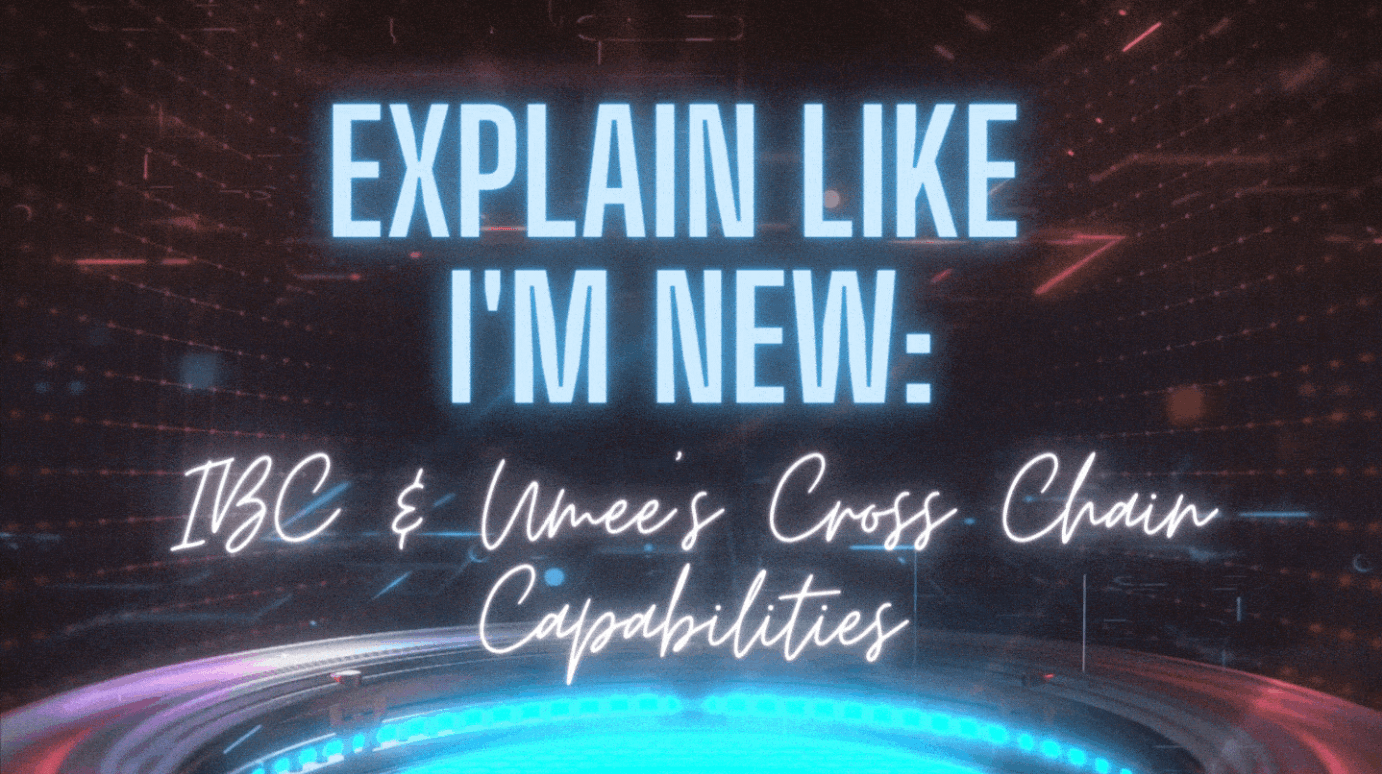ELIN: IBC & Umee’s Cross Chain Capabilities

TLDR
The Inter-Blockchain Communication Protocol (IBC) is a core part of the greater Cosmos ecosystem. The IBC allows different sovereign blockchains to communicate with one another, and thus supports the transfer of data and tokens between different networks in a decentralized manner.
Bridging
Over the past 12 months, many crypto users have become familiar with bridging their assets between chains. Typically in this process, a crypto user agrees to lock their asset on one chain in order to receive a protocol-specific version of the same asset on the other chain. Let’s use Olivia as an example:
Olivia wants to bridge her UMEE from Umee to Ethereum. She uses Umee’s gravity bridge to bridge 100 UMEE from her Umee wallet and receives 100 UMEE in her Ethereum wallet.
Behind the scenes, it’s not as simple as sending tokens from one wallet to another. Olivia’s Umee tokens are actually being locked on the Umee blockchain, and new ones are being minted on the Ethereum blockchain. Olivia starts with the native UMEE tokens on the Umee network, and ends up with ERC-20 UMEE tokens on the Ethereum network. This process ensures that the original tokens are taken out of circulation before the ERC-20 version of the tokens are added to circulation.
Olivia can bridge her Umee tokens back from Ethereum to Umee at any time. When she does, her ERC-20 Umee tokens will be burned, and the original Cosmos SDK Umee tokens will become unlocked. This lock/unlock process works both ways, so Ethereum based assets can also be bridged to and from Umee.
IBC
In order to understand the IBC it’s important to have a general understanding of how the Cosmos ecosystem works. The Cosmos ecosystem is made up of Hubs and Zones. You can think of a Hub as a core infrastructure aimed to provide shared security and interoperability to the Zones connected with it. Zones, on the other hand, are application-specific blockchains that share data with a Hub. Zones are sovereign blockchains, but they rely on Hubs and the IBC to transport data to other Zones and Hubs.
Andra offered a great analogy in this article, where she related Hubs to airports, Zones to countries/destinations, data to people/travelers, and the IBC to airplanes. In order for travelers to go from one country to another, they take an airplane from one airport to another and finally reach their destination.
On the Ethereum network, ERC-20 tokens can be used across many dApps, but it is often expensive and time-consuming to do so because they rely on the same network to process transactions. When there is limited blockspace with excessive demand, basic transactions can become unreasonably expensive.
In the Cosmos ecosystem, the Hub & Zone model allows builders to more easily build and customize their own blockchains to best suit a specific use, while the IBC allows interoperability between these sovereign blockchains. This provides a more scalable model, so end users are able to use individual Zones that suit their specific needs without necessarily paying excessive gas fees or sacrificing decentralization.
Umee is an IBC-enabled chain, which means assets can easily be deposited and withdrawn between Umee and their native chains. Later on, UX improvements can be made to make the process of using IBC-enabled tokens on different zones as seamless as using ERC-20 tokens on different dApps currently is, in a fast and inexpensive manner.
The Umee hub will focus on connecting money markets to provide users with access to cross chain leverage, liquidity, and more. Through IBC, Umee is connected to roughly 40 blockchains from day 1. Umee makes cross chain lending and borrowing possible; users will be able to deposit assets native to one blockchain in order to borrow assets native to another blockchain. For example, an Umee user who holds ATOM will be able to use it to borrow OSMO which can then be used to provide liquidity on Osmosis. Later on, Umee will allow users to use staked assets as collateral, and allow for even better capital efficiency.
